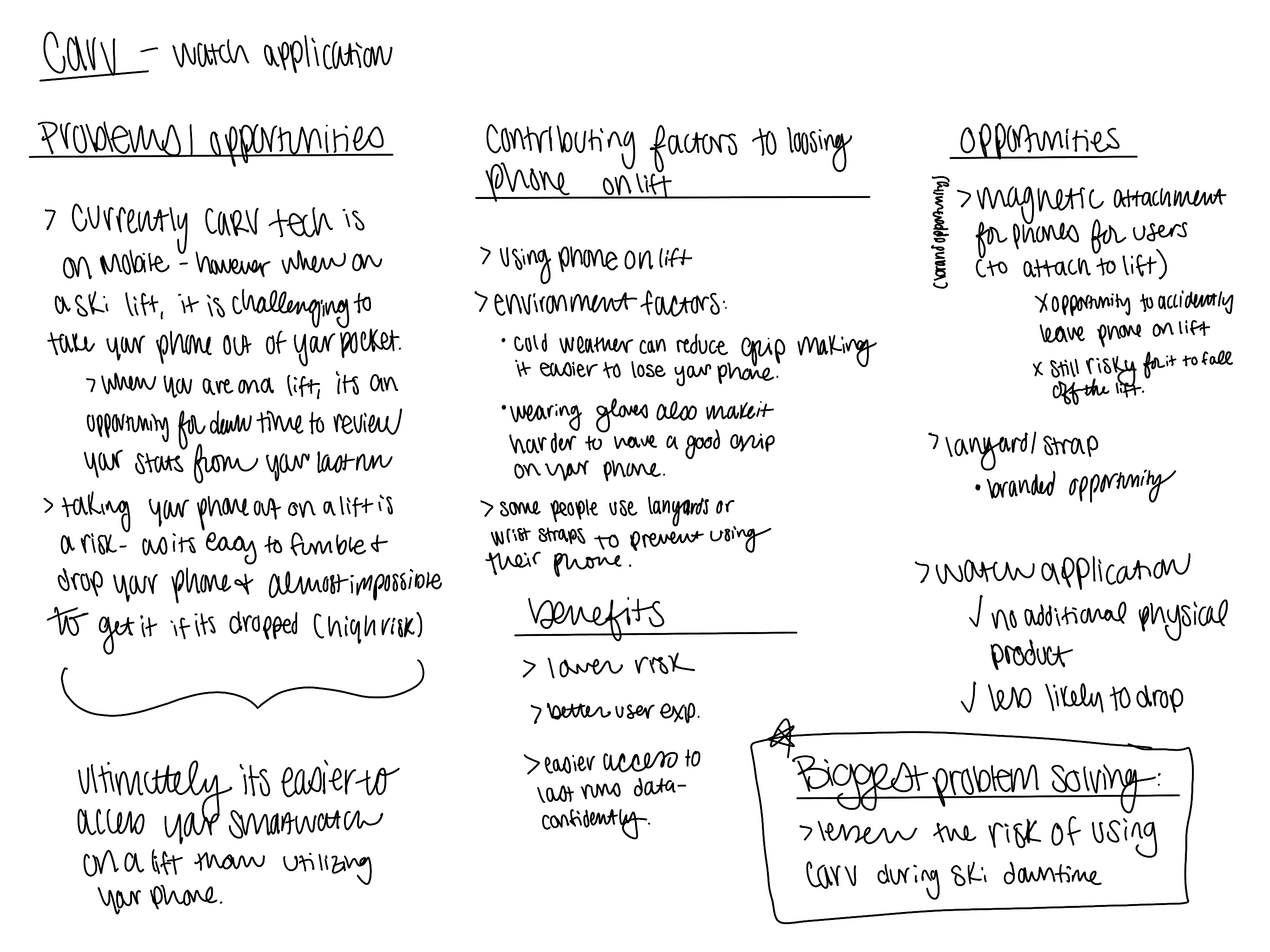Artificial Intelligence Enhancement
Elevating skills


Situation
Project Details
Carv is the ultimate digital ski coach, delivering real-time audio feedback and detailed performance analytics to help skiers of all levels improve their technique and enjoy the slopes. This project, part of the MIT Designing and Building AI Products course, aimed to identify real-world challenges where AI could enhance outcomes. By understanding user needs and assessing Carv's technological capabilities, through this project I set out to explore AI-driven solutions that elevate the skiing experience and improve accessibility.
Project
MIT designing and building AI Workbook
Goal
Enhance User experience and limitations of human-computer interaction
Company
Carv Digital Ski Coach
My Role
Student
Process
Moving Carv from Pocket to Wrist
While exploring functionality and enhancing user experience within the limits of human-computer interaction, it became clear that the challenges of using the Carv app on a mobile device while skiing required deeper investigation.

Currently, Carv is available on mobile, but using the app while on a ski lift poses challenges. Lifts provide downtime to review runs, but taking out a phone risks dropping it—making retrieval nearly impossible. This creates a high-risk, inconvenient experience for skiers. Accessing a smartwatch, however, is far easier and safer, offering a better user experience for Carv users.

Imagine expanding accessibility while introducing features like safety alerts tailored to dynamic skiing conditions. Envision real-time data processing and personalized coaching that adapts to each skier, offering immediate feedback and advice. There's potential to foster motivation and community through gamified elements like badges, while also exploring tools to monitor fatigue and track progress toward daily goals.
These innovations could make skiing not only safer but also more purposeful, with an emphasis on improving technique and achieving personal milestones.
These innovations could make skiing not only safer but also more purposeful, with an emphasis on improving technique and achieving personal milestones.
Action
All on the wrist
To ensure a user-centric design, I created a plan incorporating user surveys, usability testing across skier levels, and analysis of existing wearable tech solutions. I designed a prototype and evaluated its interface using usability heuristics to ensure it effectively supports skiing performance analysis and coaching.

Results
An a-Grade Avalanche
This project received an A grade from MIT AI professionals. This evaluation played a key role in earning my certification in Building and Designing AI Products at MIT.
While the project is yet to be implemented, several leading ski apps, including Slopes, Ski Tracks, Snoww, and SkiPal, have successfully expanded their user experiences to smartwatches, setting a strong precedent within the industry.
While the project is yet to be implemented, several leading ski apps, including Slopes, Ski Tracks, Snoww, and SkiPal, have successfully expanded their user experiences to smartwatches, setting a strong precedent within the industry.
Offers detailed stats, interactive maps, and social features. It automatically detects lifts and runs, providing comprehensive tracking for skiers and snowboarders.
Known for its battery efficiency and offline capabilities, Ski Tracks records your entire day on the slopes, including run and lift analysis, and supports 3D maps.
Ideal for those who enjoy a social aspect, Snoww allows you to connect with friends, compare stats, and even compete on leaderboards, adding a fun, competitive element to your skiing adventures.
Provides comprehensive tracking of your skiing performance, including speed, distance, and elevation. It also offers features like segmented trip analysis and customizable waypoints.
